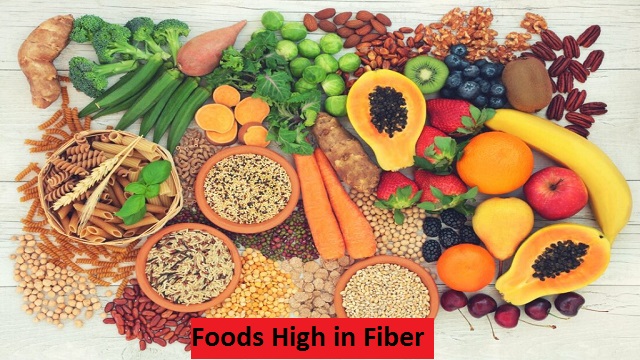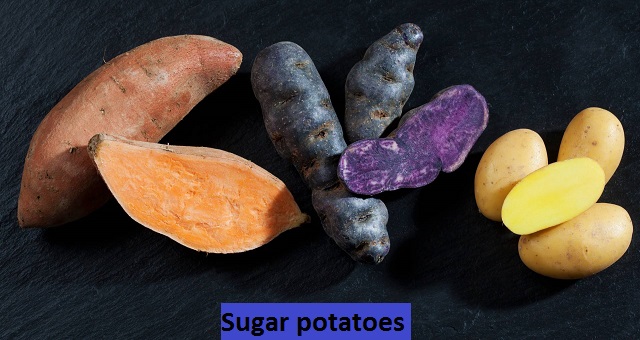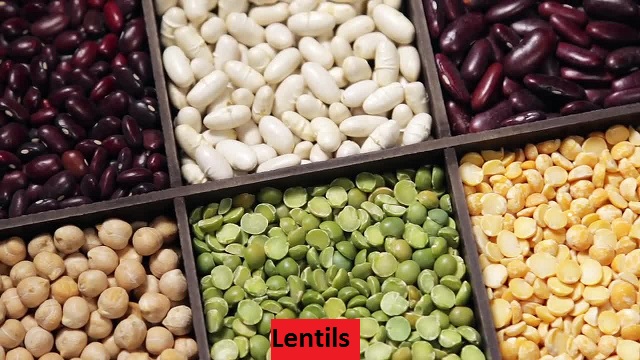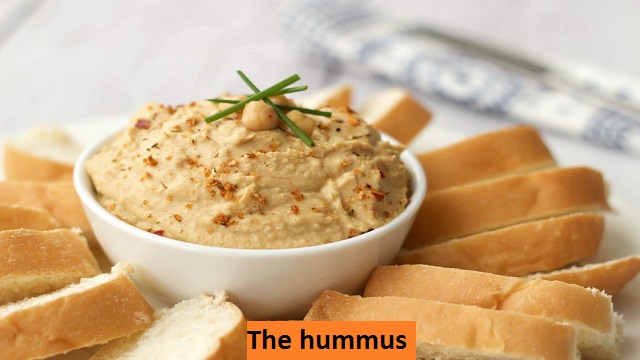
20 Foods High in Fiber That You Must Include In Your Diet.
Foods high in fiber may hold the secret to a digestive system that is both healthy and productive. More fiber in your diet will help you feel less bloated, have better digestion, and have a healthy gut flora. In this article, we’ll look into and identify some of the best fiber-rich foods that you should think about including in your diet for better gut health and digestion.
Exactly what is fiber?
In general, fiber belongs to the carbohydrate family. Dietary, soluble, and insoluble fibers can all be classified as fiber. While insoluble fibers come from the outer skin and go straight through your digestive system, soluble fibers are found on the inside of plants.
The most frequently used uses of fiber are to lower cholesterol, promote digestive health, prevent constipation, and maintain healthy blood sugar levels. Fiber has a wide range of other known advantages as well.
Foods High in Fiber:
Another crucial nutrient is fiber. According to studies, fiber may offer some degree of protection against conditions like diabetes, heart disease, and cancer that are chronic diseases. Additionally, fiber keeps you full, supports and promotes your weight loss goals while also aiding in weight loss.
According to research, Americans only consume 10–15 grams of fiber on average per day, which is much less than the 25–38 grams per day that is considered to be the daily recommended amount. High fiber foods are those that contain more than 5g of fiber per serving.
Your diet’s key to a contented and healthy digestive system is adding high-quality, fiber-rich foods. The best sources of fiber are supplements and bars, but those aren’t always the best choices because most bars have a ton of sugar added to them, and fiber supplements are just difficult.
The best source of fiber is always whole, fiber-rich fruits and vegetables.
Water is essential when increasing the amount of fiber in your diet. Water acts as a broom that sweeps through your system, helping to move fiber through your GI tract more effectively.
Therefore, make sure you drink at least 8 glasses a day to meet your needs.
Let’s now discuss some foods high in fiber that you can easily include in your diet to enjoy these advantages.
1. Broccoli sprouts.
4g of fiber per cup.
When you’re sick of eating broccoli every week, you need to try Brussels sprouts, a vegetable that is high in fiber. Each cup of Brussels sprouts contains 4 grams of fiber, of which 53% is soluble and 47% is insoluble.
This fiber helps regulate blood sugar levels, bowel movements, and satiety. For a tasty and crispy side that is high in fiber, season with salt and pepper and drizzle with olive oil before serving.

2.Sugar potatoes.
4g of fiber per cup.
Sweet potatoes are another incredible vegetable that is high in fiber and vitamins. They add flavor and nutrition to your diet. Sweet potatoes are a healthy carbohydrate that can help you feel fuller for longer while also giving you a steady release of energy without raising your blood sugar levels.
Check out Clean Carbs if you want a quick and easy way to include more complex carbs and fiber in your diet.
3. Rice that is brown.
4g of fiber per cup.
Your weekly meals will taste great with brown rice. They enrich your diet with high-quality carbohydrates and more sustenance. You should include this fiber-rich food if you want to increase your muscle mass in the gym.

4. Splished Peas.
7 grams of fiber are contained in one cup.
One potent green bean is split peas. Peas are a fantastic side dish or snack because they have 7g of fiber per cup. Peas are one food high in fiber that you should include in your diet because they are high in protein, low in fat, and packed with fiber.
5. a pasta dish made with chickpeas.
Banza chickpea pasta wins the “W” in both the fiber AND protein categories when it comes to pasta. You can add 8g of dietary fiber and 20g of protein per 3 point 5 ounce serving of chickpea pasta by replacing your traditional pasta with it.
6. The chia seed.
14 grams of fiber are contained in a quarter cup.
Chia seeds, which are considered a superfood, are an excellent addition to Greek yogurt, smoothies, and salads to provide any extra protein and fiber you might be lacking. 4g of protein, 9g of good fats, 12g of complex carbohydrates, and 11g of fiber are found in one ounce, or about 2 tablespoons.
7. Apples.
Per medium-sized apple, there are 4.5g of fiber.
One medium-sized apple has about 4 and a half grams of fiber, which is sweet and filling. The vitamins C and complex carbohydrates are both abundant in apples.Pick up some peanut or almond butter and turn this fiber-rich fruit into a tasty sweet and salty snack full of healthy fats and nutrients.
8. Avocados.
10 grams of fiber are contained in 1 cup (7 grams in a half).
Avocados are one of the best food additions to your diet because they are a vibrant shade of green, delicious, and packed with fiber and good omega-3 essential fats. Spread some avocado on toast, slice it up for your salad or sandwich, or just top one whole half with some corn or black beans and a little salsa to make a mini-avocado bowl.

9. Lentils.
Another high-fiber legume is lentils, which is a fiber powerhouse with an amazing array of sources. Legumes are low in fat, high in fiber, and high in protein, so they can help you achieve your body-aesthetic goals and enhance your general health and wellbeing.
10. Beans of color.
1 cup of fiber contains 17g.
The ideal fiber-rich food, or as I like to refer to them, “my taco wingmen.”. Your tacos, taco bowls, or salad will taste great with black beans. Grab some tortillas made with almond flour, mangos, steak, salsa, and some corn and black beans on the side. There is no possibility of disappointment.
11. Pizza from Quest.
This protein- and fiber-rich pizza is made by the infamous quest bar manufacturer. Choose from cheese, pepperoni, or meat lovers and indulge while receiving 19g of fiber and 28g of protein per serving.

12. The hummus.
As a go-to snack, some carrots and hummus are never a mistake. Chickpeas and olive oil are used to make hummus, which is high in fiber. This deliciousness has 15g of fiber and 19g of protein in one cup.
13. Hummus is made with chickpeas.
35 grams of fiber are contained in 1 cup.
Protein and fiber content in chickpeas are extraordinarily high. Two delectable recipes—hummus and chickpea pasta—are the simplest ways to incorporate these little ones into your diet.
Talk about fiber-packed deliciousness—hummus has 15g of fiber per cup and chickpea pasta, like Banza, has 13g per serving. The Whole Foods Jalapeo Hummus is worth a try. It is worthy of a dream.
14. Whole-wheat pasta.
Each cup contains 6 grams of fiber.
Whole wheat pasta is an excellent alternative. Due to the fact that whole grains and the hull are still present, whole wheat pasta provides twice as much fiber per cup as regular pasta. Add some organic pasta sauce, diced chicken breast, mushrooms, and garlic, and presto. Magnificent pasta.
15. Prunes.
12 grams of fiber are present in 1 cup.
Prunes, a very dense and fiber-rich food that also contains sorbitol, nature’s natural laxative, are known as “nature’s laxative.”. Chew on a few of these to get things going quickly. To give your smoothies a rich and delectable chew texture similar to dates, blend them in.
16. Blackberries.
8 grams of fiber are present in 1 cup.
Bomb. Blackberries contain 8g of rich fiber per cup, so there’s not much more I can say about them. To add a little extra yum to your diet, add some blackberries to your salad, fruit smoothies, and Greek yogurt.
17. Beans, pinto.
One of the foods highest in fiber is pinto beans, along with its close relative, the black bean, and its distant relative, the lentil. Each half cup of pinto beans contains 21g of protein and 16g of fiber.
18. Raspberries.
When it comes to berries, raspberries are among, if not the most fiber-rich food. In addition to keeping you healthy, raspberries’ 8g of fiber per cup can assist in facilitating the movement of food through the digestive system.
19. Pears.
Pears are a tasty source of fiber, or sandy apples as I like to call them. Pears, which contain 6g of fiber per medium-sized pear, are especially high in fiber when compared to the majority of fruit. Grab a juicy fiber snack the next time you’re at the store.
20. Guava.
Amazingly high in antioxidants, vitamin C, potassium, and fiber, guavas also provide 14% of the daily recommended intake of these nutrients. Additionally, you get 9g of fiber from one cup of this juicy fruit. Your fruit smoothie will contain all the fiber you require if you add some guava to it.
Stunning Health Advantages of Fiber.
1. Losing weight healthily.
It is common knowledge that increasing your dietary fiber intake may aid in your effort to lose weight. Participants were assigned at random to one of four calorie-restricted dieting groups in a 2019 randomized controlled trial that was published in The Journal of Nutrition. Additionally, they were told to include 90 minutes of physical activity each week and gradually increase their dietary fiber intake.
According to the findings, participants lost roughly the same amount of weight regardless of the type of diet they followed. The authors of the study concluded that fiber intake was the cause of this, which supports the findings of earlier research that consuming more fiber can aid in weight loss.
Foods high in fiber help you feel full more quickly and for longer.
2. Maintaining weight.
In spite of the need for additional research, a 2017 study published in The Journal of Nutrition and Metabolism found some evidence that people who consume more fiber typically have a leaner physique.
The normal-weight group consumed more fiber than the obese group, according to research that compared two groups, one considered to be of normal weight and the other as obese.
3. reduce your type 2 diabetes risk.
A higher overall intake of dietary fiber was linked to a lower risk of Type 2 diabetes, according to a 2020 study that was published in the Journal of Diabetes Investigation. And while some earlier studies indicated that insoluble fiber starred regarding Type 2 diabetes,
this study contends that the combination of soluble and insoluble fiber predicted greater prevention of the disease. Although the reason why fiber reduces the risk of Type 2 diabetes is not fully understood, the researchers hypothesize that it may be due to a combination of fiber’s beneficial effects on blood glucose levels, improvement of the gut microbiome, and reduction of inflammation in the body.
4. Reduced Risk of Heart Disease.
High fiber intake is strongly correlated with a lower risk of developing cardiovascular disease, having a stroke, and dying from the condition, according to a 2017 review in the Journal of Chiropractic Medicine. That’s partly because fiber can absorb extra cholesterol in your body and transport it out of your body before it can clog your arteries.
This review discovered that beta-glucan (6 grams/day) and psyllium (10 grams/day) fiber in particular showed notable benefits in terms of a decreased risk of heart disease. These two fibers fall under the category of soluble fiber. Both barley and oats contain beta-glucan.
Psyllium is derived from the psyllium seed’s husk and is used in dietary fiber supplements and as an ingredient in baked goods to raise their fiber content.
5. Increased Good Gut Bacteria.
The beneficial microbes that make up your gut’s microbiome thrive on fiber and are fed by it. A review article published in Animal Nutrition in 2022 states that as your gut bacteria consume fiber that has fermented in your GI tract, they produce short-chain fatty acids that have a variety of advantages, including reducing systemic inflammation, which has been associated with almost all major chronic health issues.
It takes very little time to see results when you increase your fiber intake. In just a few days, you can begin to notice changes in your gut flora, according to Kelly Swanson, Ph. D. , a professor of nutritional sciences at the University of Illinois in Urbana-Champaign.
The caveat: In order to continue reaping the rewards, you must consistently consume enough grams of fiber over time. Cutting back on fiber causes bacterial population shifts that could have negative effects and increase inflammatory responses in the body.
Read More: Vertical diet
Leave a Reply